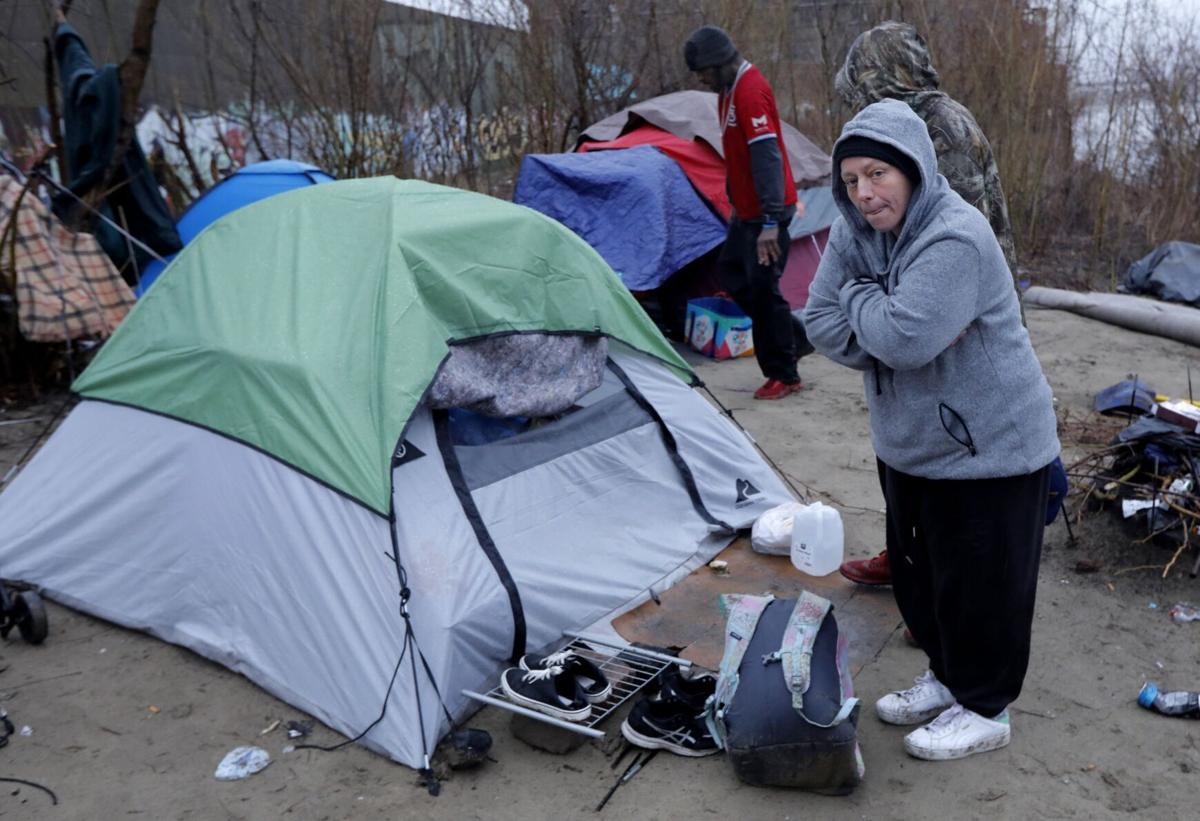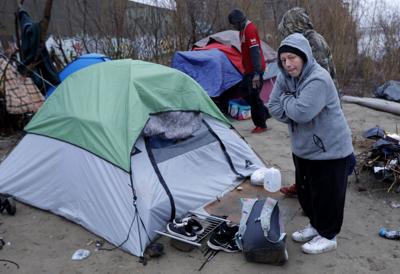ST. LOUIS ã Samantha Stangl was ready to address the proverbial elephant in the room.
She was standing before 30 of the regionãs top leaders in providing services to unhoused people. These are the folks who trudge through the snow on a cold winter night, finding people huddled on a steam grate, or in the woods, or under a highway overpass. The goal is to take them to a shelter, or at least provide blankets and coats so they donãt freeze.
Theyãre the folks who feed an evicted family and help find a hotel room for a couple of nights. Theyãre the folks who work tirelessly to help our neighbors in need.
They were on the verge of making a historic decision. For more than two years, most of these leaders have been preparing for a major change in how homeless services are funded and organized.
People are also reading…
Every year, there has been a conflict among providers that ended with people who lack shelter suffering even more. There are often clogs in the flow of money from the federal government to the city, and to the organizations doing work on the streets. There are conflicts between nonprofits and City Hall. There are fingers pointed. Encampments closed. Deaths that are preventable.
This is the story of homelessness in ûÜî¢Ç¨û§ and most major cities in America.
The solution conceived by local nonprofit and business leaders was to look to Houston and Dallas. There, the systems for reducing homelessness have been re-configured and infused with federal money and philanthropic donations. But the path to success ã putting more people into affordable housing and connecting them with social services ã is paved with obstacles.
Thatãs what Stangl was at the Salvation Army in Midtown to talk about. Sheãs the executive director of a nonprofit, created by other nonprofit leaders, to help solve some of the problems of the past. Called , the group and its leaders were at the monthly meeting of the Continuum of Care with a request. They wanted to be entrusted with writing the plan that secures about $14 million in federal funding each year to address homelessness in ûÜî¢Ç¨û§.
ãTrue system change is painful,ã Stangl said.
Nobody in the room knew that more than Anthony DãAgostino. The chairman of the Continuum of Care, he is also CEO of , one of the largest local providers of homeless services. DãAgostino started the wheels in motion to create House Everyone STL. But earlier this year, the federal Department of Housing and Urban Development told DãAgostino that since he helped create the organization, it would be a conflict of interest for him to give it the new power so many people in ûÜî¢Ç¨û§ hoped it could have.
So over the past several months, the various nonprofit providers and Adam Pearson, head of the Department of Human Services for the city, forged a path forward. There would be new leadership at the Continuum of Care to remove conflicts of interest. The city and House Everyone STL would work together to improve the delivery of funding and services.
But the members of the Continuum of Care would ultimately decide whether it was the city government ã as it always has been ã or House Everyone STL that would organize the plan to divvy up the federal dollars.
The vote came Thursday, after Stangl and her board chairman, Tim Huffman, made their pitch. After a long and difficult process, House Everyone STL is ready to fulfill the mission for which it was designed.
Now comes the heavy lifting. With the affirmative vote, House Everyone STL will try to do something that has been lacking in ûÜî¢Ç¨û§: bring together government, nonprofit and business leaders to devise a unified and well-funded plan to tackle homelessness.
Itãs not that there hasnãt been tremendous effort from dozens of organizations on the ground. But the most successful models for reducing homelessness have all the players singing from the same hymnal ã with an organized plan to move people into housing quickly and efficiently. That hasnãt always been the case in ûÜî¢Ç¨û§. It must be if whatever plan House Everyone STL writes for 2024 is going to make a difference.
ãI would love it if we would have had some of these big-picture conversations 20 years ago,ã Pearson told me in an interview last week.
Theyãre happening now, and he says the city and House Everyone STL are working to collaborate and create momentum.
ãThis is a historic moment,ã Huffman said. ãI genuinely believe that ûÜî¢Ç¨û§ has a solvable homelessness issue.ã
Although the homeless encampment outside City Hall started around July, it wasn't until September that the amount of tents quickly grew. After the mayor's office announced the camp would be cleared on October 2, there was uncertainty of how much longer the encampment would be allowed to stay. Video by Allie Schallert, aschallert@post-dispatch.com






















